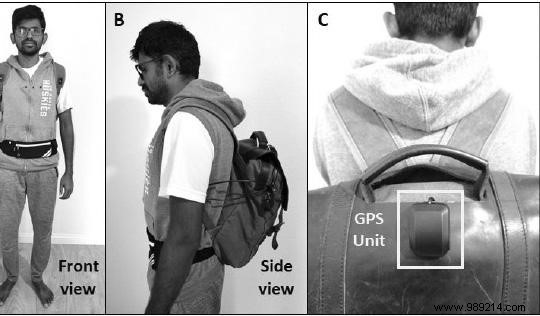Computer giant Intel recently unveiled a new assistance system for the visually impaired. Based on artificial intelligence and a stereoscopic camera, this system is partly concealed in a backpack.
What if visually impaired people could one day do without their cane and their assistance dog? In collaboration with Intel, a team from Georgia State University (USA) is behind an innovation that could represent a revolution for people with visual impairments . It is a portable assistance and guidance system, concealed so as to go unnoticed.
According to the researchers, the system uses AI and a Luxonis Oak-D camera. This has two lenses for stereoscopic vision, allowing you to understand the distance of objects and other obstacles. We should also mention the presence of a third lens, the definition of which is 3,840 x 2,160 pixels (4K). Everything works with a battery allowing an autonomy of eight hours.

While the battery and camera are in a fanny pack (or vest), the backpack houses a computer. The latter is connected to the camera, but also to a GPS system. However, most of the data processing happens in the camera, which has an Intel Movidius Myriad X chip. It uses deep neural networks , detecting obstacles on the ground and in the air. Other people, pedestrian crossings, signs, tree branches or even the difference in level of building entrances are taken into account – among others. User guidance is done by means of a Bluetooth headset connected to the computer. This allows him to use voice commands. The user can for example request a description of the environment in which he is. It can also be to remember the description of the places already visited.
You should also know that researchers wish to distribute their project via a free license (open-source). Thus, anyone can try to improve or adapt the system. For example, it may be a question of finding a way to use a smartphone rather than a computer, in order to avoid carrying a backpack. We should also mention the possibility that in the more or less near future, the system could integrate connected glasses.
“The technology exists, we are only limited by the imagination of the developer community", reads Intel's March 24, 2021 press release. The company has also released a demo video to watch below: